Japan
USA


Unlike the previous two Genesis Shinobi games, this one has several differences between the Japanese and American versions. Most of these are incredibly minor, but there were a few changes to make the American version a little easier. Changes made to the American version also apply to the European (PAL) release. |
Japan |
USA |
 |
 |
The titles between versions are once again different. Since in Japan the game is a direct sequel to The Super Shinobi, the game is called The Super Shinobi II. But in America, SEGA decided to call it Shinobi III. From a storyline point of view this is the fourth Shinobi game (after Shinobi, The Revenge of Shinobi and Shadow Dancer), but the III must have been because it is the third Shinobi game for the Genesis. |
Japan |
USA |
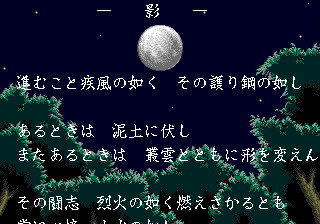 |
 |
The text in the Japanese version moves faster than it does in the American version. This leads to the Japanese version's game demos starting earlier also. |
Japan |
USA |
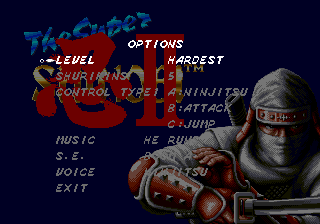 |
 |
The most difficult setting in the Japanese version is called "Hardest". In America, "Hardest" was renamed "Expert". |
Japan |
USA |
 |
 |
The sound effect "8SOU SHURIKIN" in the Japanese version was renamed "SHURIKINS" for the American version. It is for the shuriken spray move. |
Japan |
USA |
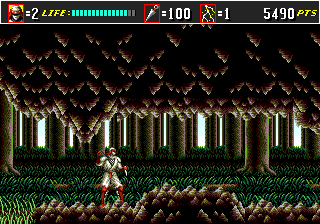 |
 |
In round 1, the background does not change as early in the Japanese version as it does in the American version. |
Japan |
USA |
 |
 |
In the elevator platform stage of round 2, one of the tunnels on the left side wall is slightly higher up in the Japanese version (ignore the colors being different). |
Japan |
USA |
 |
 |
At one point in the platform stage, there is an item box in the Japanese version which was removed from the American version of the game. It contains a ninjitsu item. Since this one was difficult to take images of, I'll just mention it here: in the Japanese version, when the platform reaches the top, it does not change speed, but in the American version, it suddenly speeds up. |
Japan |
USA |
 |
 |
In one of the factory rooms in round 5, there was a area changed to the left of the screen. Joe will stand in front of the fence of the fence in the Japanese version, but behind it in the American game. |
Japan |
USA |
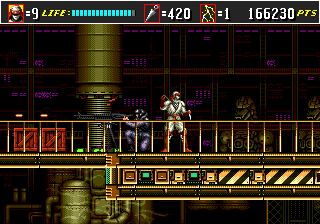 |
 |
In the same room as the above change, there is another area at the top which is slightly different between versions. |
Japan |
USA |
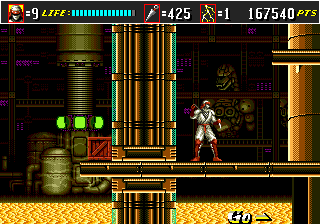 |
 |
In the same room as the above two changes, there is yet another small difference above the room's exit. |
Japan |
USA |
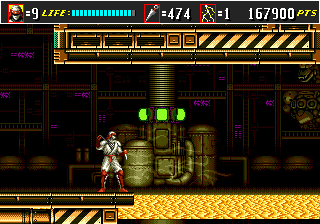 |
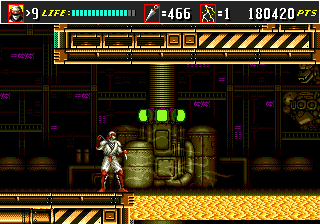 |
Still in the same room as the above, another incredibly minor change at the bottom of the room. |
Japan |
USA |
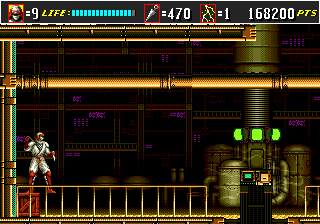 |
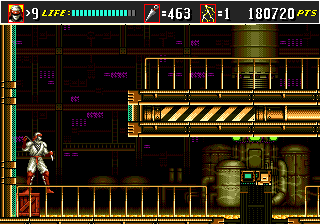 |
In the next room, there is a part where you have to use a pipe to move across to the right in the Japanese version. In the American version, the pipe was taken out and replaced with a large platform. |
Japan |
USA |
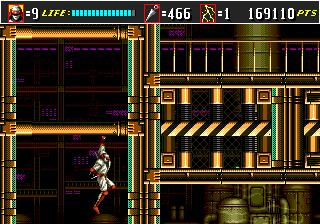 |
 |
Another pointless change made in the same room as the above difference. |
Japan |
USA |
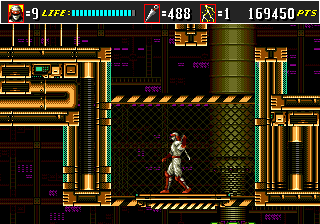 |
 |
This falling platform is in front of a fence in the Japanese version and behind it in the American game. |
Japan |
USA |
 |
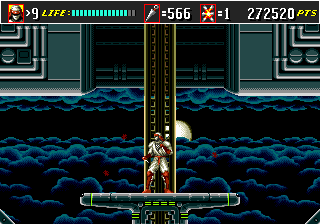 |
During the moving elevator platform section of round 7, the platform will take you all the way to the top in the Japanese version. But in the American version, it stops at a certain point, forcing you to somersault jump or wall jump to progress. |
Japan |
USA |
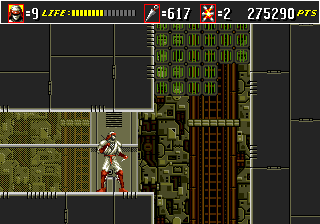 |
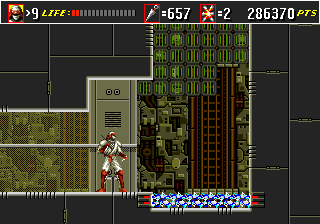 |
This section of the aerial fortress' interior was changed. In Japan, there is a bottomless pit, but in the American version it was changed to a shock field, and part of the ceiling was changed to make the jump easier. |
Japan |
USA |
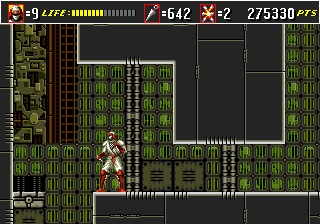 |
 |
In the Japanese version, this area features a small bottomless pit and a platform which will fall when you land on it. This was changed for the American version so the pit and platform were removed, replaced with solid ground. |